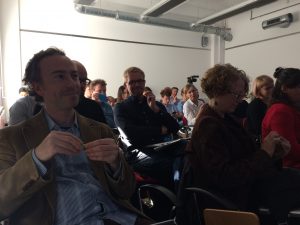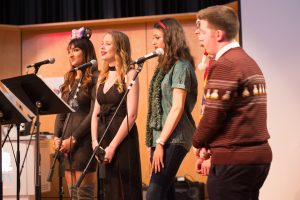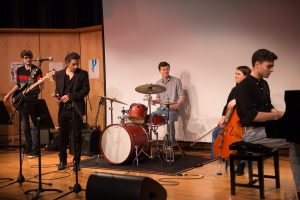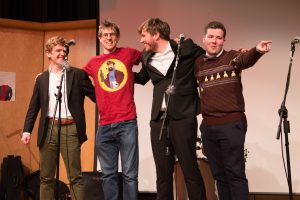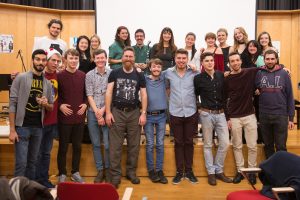In late September we launched our new research centre SPARC, Sound Practice And Research @ City, with the Touching Sound symposium, the first of our yearly September Symposiums.
We spent two days contemplating the tactility of sound with a group of people fr om a variety of disciplines. Surgeon Prof Roger Kneebone, our key-note, opened proceedings with his talk on touch in medicine where he introduced us to the fascinating world of surgery and his collaboration with a lace-maker. He explained that for him, attending to touch, is a way of looking at the practice of surgery that can bring into view aspects that might not be otherwise apparent.
Composers Dr James Weeks reminded us that in music we have a tendency to priorities words that are associated with touch, such as texture, temperature, grain and introduced us to one of his works that evokes such tactility. Dr Aaron Einbond suggested a sense of disembodiment through reproduction, transcription, and trace in his compositional practice, and Dr Amber Priestley introduced us to one of her installations which we had the pleasure to experience hands on during a concert in the evening. Alongside wonderful performances by violist Benedict Taylor and guitarist Pétur Jónasson with live-coding by Dr Thor Magnusson. Pétur, in his talk earlier in the day asked whether a sonic instance could leave a permanent physical marker in our brain if it elicits a strong emotion, and Thor questioned whether the composed-work-concept is disappearing due to the expanding use of anthropic digital instruments.
Digital artist Amie Ray had us taste letters and kneed play-dough, choreographer Teoma Naccarato gave us insight into her collaborative practice in creating intimate, one-to-one dance performances, and ceramicist Julian Stair introduced us to his Quietus project that explores the containment of the human body after death.
Composer/sound artist Jan Hendrickse, understanding the body as a contested site which is caught in a constant performance, asked us to reimagine the body as musical structure. Dr Miguel Mera showed us how the synchronicity of sound and sight can elicit touch in film, and PhD candidate William Cole proposed touch as a model for an expanded musical form. Dr Adam Harper explored the tangibility of the digital by explaining that the digital does not lack physicality, but rather possesses a different kind of physicality. And landscape architect Johanna Gibbons introduced us to the connections between soil and roots with our lived experience.
In due course there will be a publication connected with this symposium, and we are very much looking forward to our next symposium in September 2018 called Socio-Sonic: an exploration of the social in sound.

